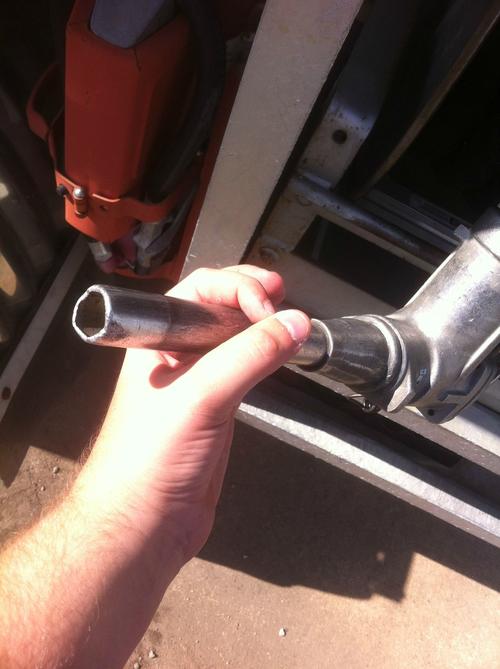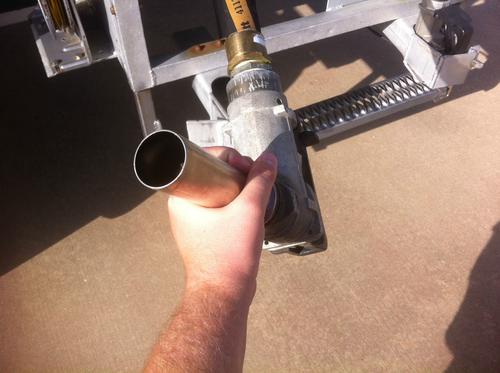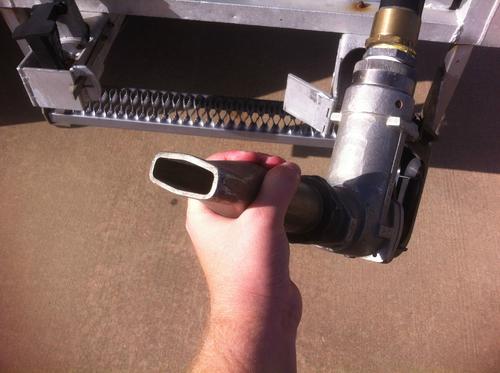overdrive148
En-Route
- Joined
- Apr 17, 2013
- Messages
- 3,903
- Location
- Fort Worth, Texas
- Display Name
Display name:
overdrive148
Avgas and Jet A Contamination Test Results (with pics and video)
Okay, so following the news of the Cessna 421 that went down in Las Cruces, NM due to being fueled with Jet A instead of 100LL (link to story here), I decided to do a few tests while sumping tanks at work to see what Jet A and Avgas looked like together.
Conclusions:
Visual test did not show any sign of contamination whatsoever.
You'd think the straw color of the Jet A and the blue color of the 100LL and their different densities would create a clear border and indication of contamination, but as you can see in the sunlight pictures, there's nothing at all. The only thing I detected with the visual test is a very slight lightening of the blue color (with the Jet A addition) and the incredibly clear border (in the water addition).
Smell test detected Jet A, but did not work as well as expected.
I could tell there was something off with the sample immediately, although the smell of Jet A was very subdued. I work around Jet A and Avgas all day at work, I know the smells and the differences pretty well. I'd take a whiff of your regular 100LL and just go by that. If it doesn't smell right, double check.
Feel test detected Jet A, but did not work as well as expected.
The slimy feel of regular Jet A wasn't exactly there, it was more watered down. Based on feel alone, I feel it's a bad test to detect contaminated fuel. However, I did do some tests in the YouTube video below based on evaporation of each fuel (100LL, Jet A, Contaminated) and found that if the fuel isn't gone off your hands in ~30 seconds, you've got Jet A on your hands. Pun semi-intended.
I had to wash my hands twice with soap and hot water after the Jet A test to even get the stuff off, it is very pervasive. The contaminated mixture did not show any sign of beginning to evaporate at 30s (which I believe is a good detector of Jet A contamination). You don't have to use your entire hand like I did, but I wanted it to be obvious on the video (which is at the bottom of this post, after the pics).
The paper test worked flawlessly.
This test requires a blank piece of paper. Put a drop or two of the fuel on your paper. If it evaporates and leaves nothing behind, you're good. If it leaves a halo or a oil spot behind, that's the sign there's Jet A in the fuel. I took the drops from my sample from about a nail's length under the surface of the contaminated fuel and it came up positive (result shown in picture form below). The only thing wrong with this test is that left for a long long time, the spot will be really hard to see. I left the sample in the FBO for like 30 minutes while I did airport stuff and came back and couldn't make out the halo anymore.
That being said, here are the pictures.
Bucket with 100LL only.
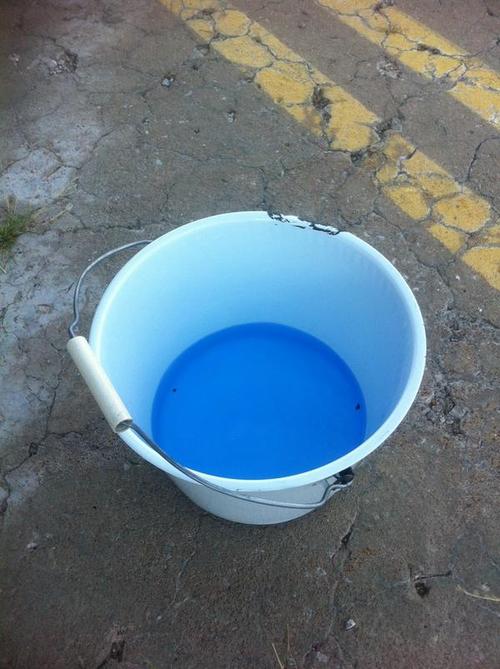
Bucket and Bottle with 100LL only.
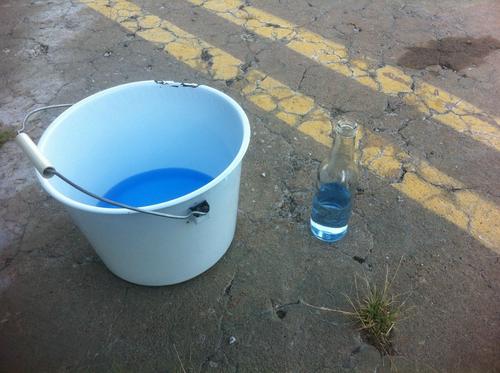
100LL Bottle against sunlight.
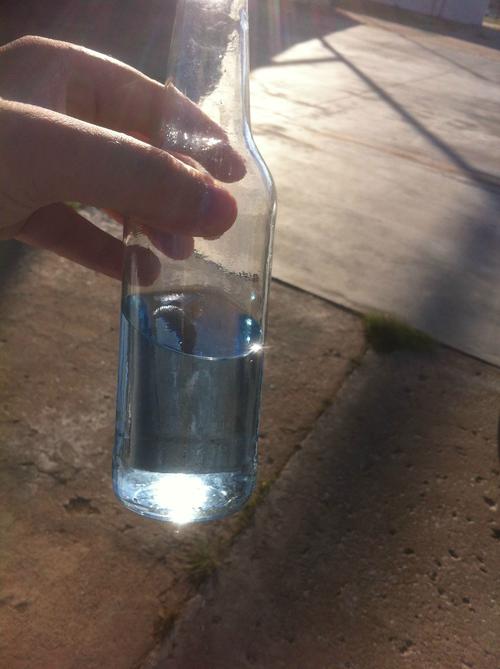
Contaminated 100LL bucket with 50/50 mixture of Jet A. Bottle has 100% 100LL still.
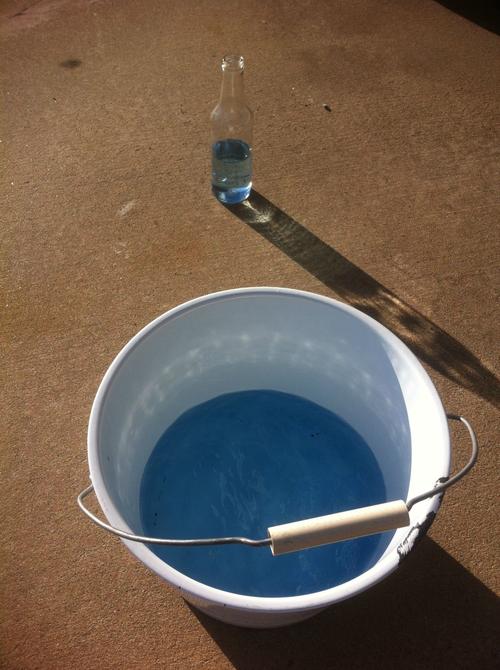
Contaminated bucket and bottle - notice the amount of fluid in the bottle compared to 100LL only in the pic above.
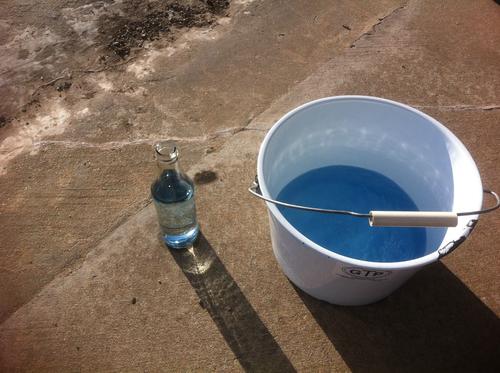
Contaminated 100LL bottle against sunlight. Still has a blue hue with no clear border whatsoever.
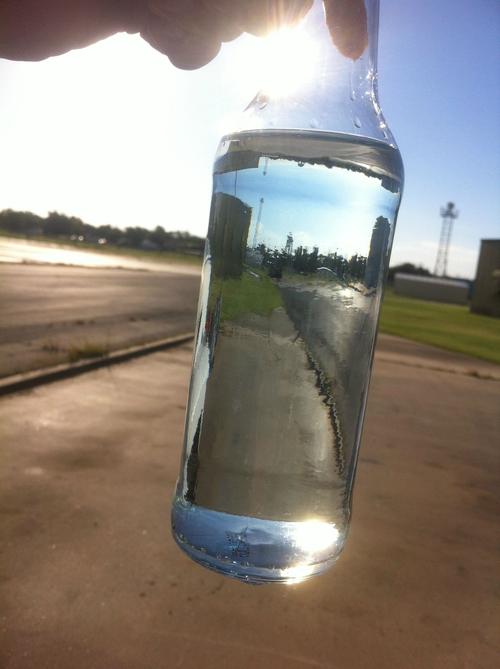
Added water to the contaminated bottle. Droplets outside with water inside settling. The clear boundary at the bottom is water.
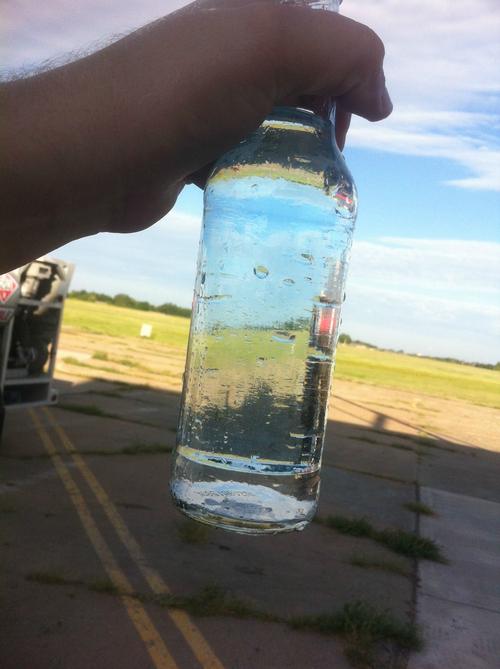
Contaminated bottle + water in shade for color observation. Still blue with no clear separation except for water in the bottom.
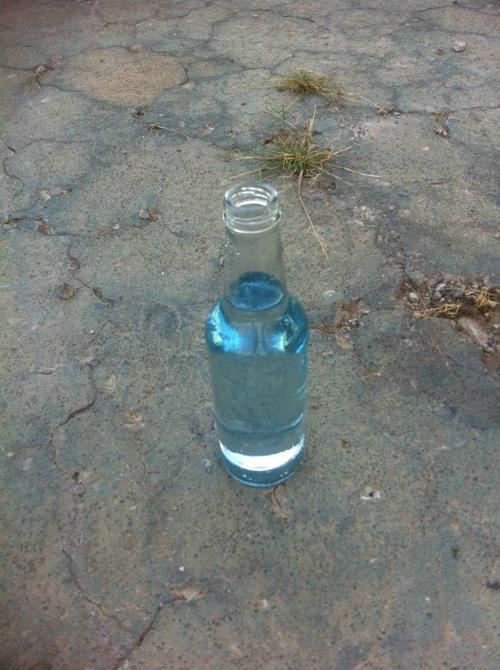
Jet A only bucket.
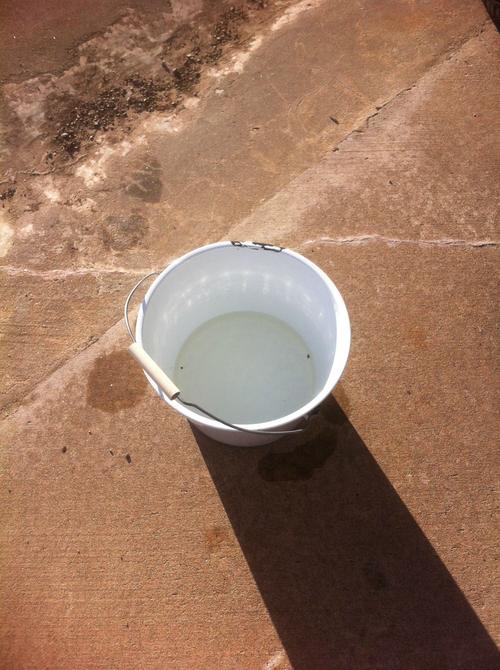
Jet A only bottle.
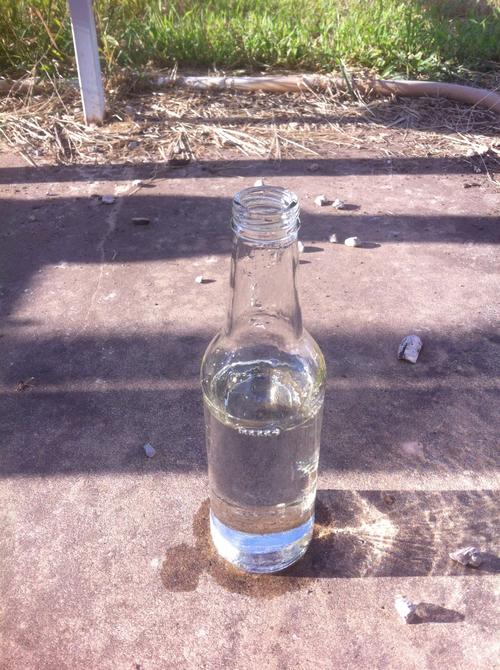
White Paper test (envelope). Halo visible on the top right corner of the paper from the contaminated Bottle, fresh 100LL was below but evaporated quickly.
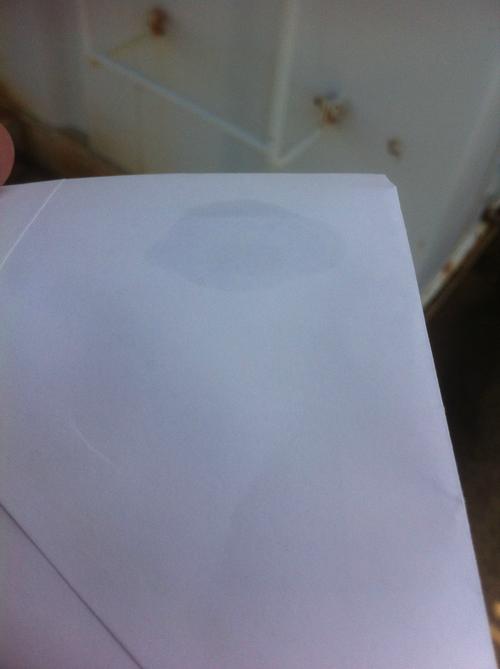
Contaminated Plastic Bottle Test - used this instead of the glass to check for differences.
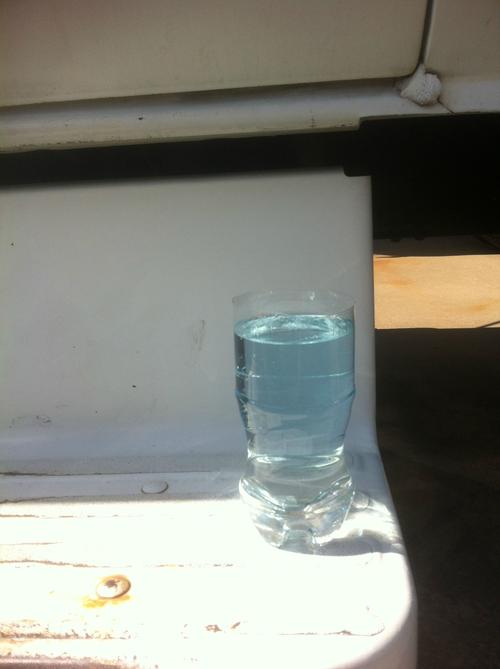
Plastic Bottle Test from above.
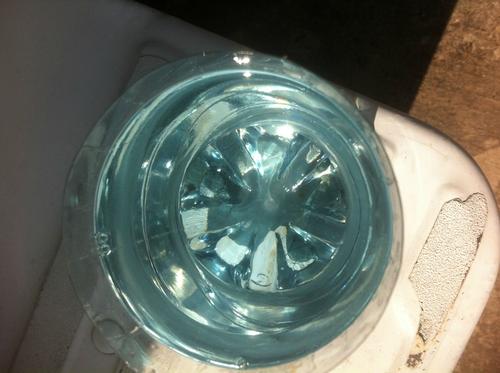
Contaminated Bottle from the side in sunlight. I let this sample sit for about 5 minutes. The horizontal line a few inches from bottom was VERY slightly showing the beginnings of a border, but it was very light.
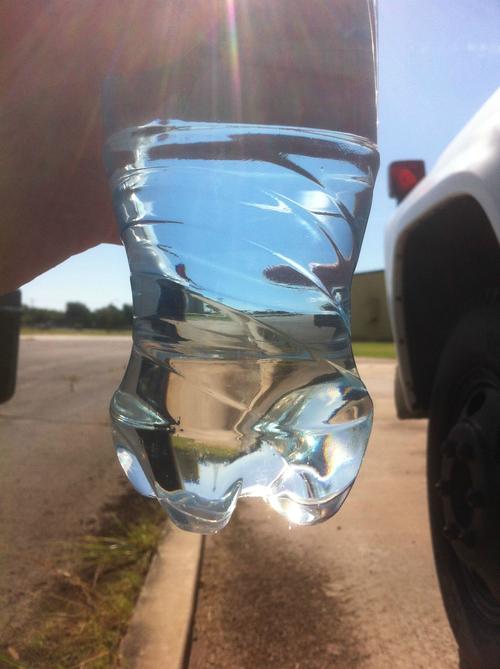
And last but not least, here's a link to the full-resolution set of pictures for extra zoom and detail for extra scrutiny.
[Link]
If you look at any of them, be sure to take a look at the up close shots of the bottles against sunlight. Hard to believe there's any Jet A in it whatsoever.
As you can see, it's not hard at all to miss the signs of fuel contamination watch the line guys fuel your plane and make sure to really look (and feel and smell) your fuel. Let's learn something from that accident and try to prevent it from happening again
watch the line guys fuel your plane and make sure to really look (and feel and smell) your fuel. Let's learn something from that accident and try to prevent it from happening again 
Okay, so following the news of the Cessna 421 that went down in Las Cruces, NM due to being fueled with Jet A instead of 100LL (link to story here), I decided to do a few tests while sumping tanks at work to see what Jet A and Avgas looked like together.
Conclusions:
Visual test did not show any sign of contamination whatsoever.
You'd think the straw color of the Jet A and the blue color of the 100LL and their different densities would create a clear border and indication of contamination, but as you can see in the sunlight pictures, there's nothing at all. The only thing I detected with the visual test is a very slight lightening of the blue color (with the Jet A addition) and the incredibly clear border (in the water addition).
Smell test detected Jet A, but did not work as well as expected.
I could tell there was something off with the sample immediately, although the smell of Jet A was very subdued. I work around Jet A and Avgas all day at work, I know the smells and the differences pretty well. I'd take a whiff of your regular 100LL and just go by that. If it doesn't smell right, double check.
Feel test detected Jet A, but did not work as well as expected.
The slimy feel of regular Jet A wasn't exactly there, it was more watered down. Based on feel alone, I feel it's a bad test to detect contaminated fuel. However, I did do some tests in the YouTube video below based on evaporation of each fuel (100LL, Jet A, Contaminated) and found that if the fuel isn't gone off your hands in ~30 seconds, you've got Jet A on your hands. Pun semi-intended.
I had to wash my hands twice with soap and hot water after the Jet A test to even get the stuff off, it is very pervasive. The contaminated mixture did not show any sign of beginning to evaporate at 30s (which I believe is a good detector of Jet A contamination). You don't have to use your entire hand like I did, but I wanted it to be obvious on the video (which is at the bottom of this post, after the pics).
The paper test worked flawlessly.
This test requires a blank piece of paper. Put a drop or two of the fuel on your paper. If it evaporates and leaves nothing behind, you're good. If it leaves a halo or a oil spot behind, that's the sign there's Jet A in the fuel. I took the drops from my sample from about a nail's length under the surface of the contaminated fuel and it came up positive (result shown in picture form below). The only thing wrong with this test is that left for a long long time, the spot will be really hard to see. I left the sample in the FBO for like 30 minutes while I did airport stuff and came back and couldn't make out the halo anymore.
That being said, here are the pictures.
Bucket with 100LL only.

Bucket and Bottle with 100LL only.

100LL Bottle against sunlight.

Contaminated 100LL bucket with 50/50 mixture of Jet A. Bottle has 100% 100LL still.

Contaminated bucket and bottle - notice the amount of fluid in the bottle compared to 100LL only in the pic above.

Contaminated 100LL bottle against sunlight. Still has a blue hue with no clear border whatsoever.

Added water to the contaminated bottle. Droplets outside with water inside settling. The clear boundary at the bottom is water.

Contaminated bottle + water in shade for color observation. Still blue with no clear separation except for water in the bottom.

Jet A only bucket.

Jet A only bottle.

White Paper test (envelope). Halo visible on the top right corner of the paper from the contaminated Bottle, fresh 100LL was below but evaporated quickly.

Contaminated Plastic Bottle Test - used this instead of the glass to check for differences.

Plastic Bottle Test from above.

Contaminated Bottle from the side in sunlight. I let this sample sit for about 5 minutes. The horizontal line a few inches from bottom was VERY slightly showing the beginnings of a border, but it was very light.

And last but not least, here's a link to the full-resolution set of pictures for extra zoom and detail for extra scrutiny.
[Link]
If you look at any of them, be sure to take a look at the up close shots of the bottles against sunlight. Hard to believe there's any Jet A in it whatsoever.
As you can see, it's not hard at all to miss the signs of fuel contamination
 watch the line guys fuel your plane and make sure to really look (and feel and smell) your fuel. Let's learn something from that accident and try to prevent it from happening again
watch the line guys fuel your plane and make sure to really look (and feel and smell) your fuel. Let's learn something from that accident and try to prevent it from happening again 
Last edited:




